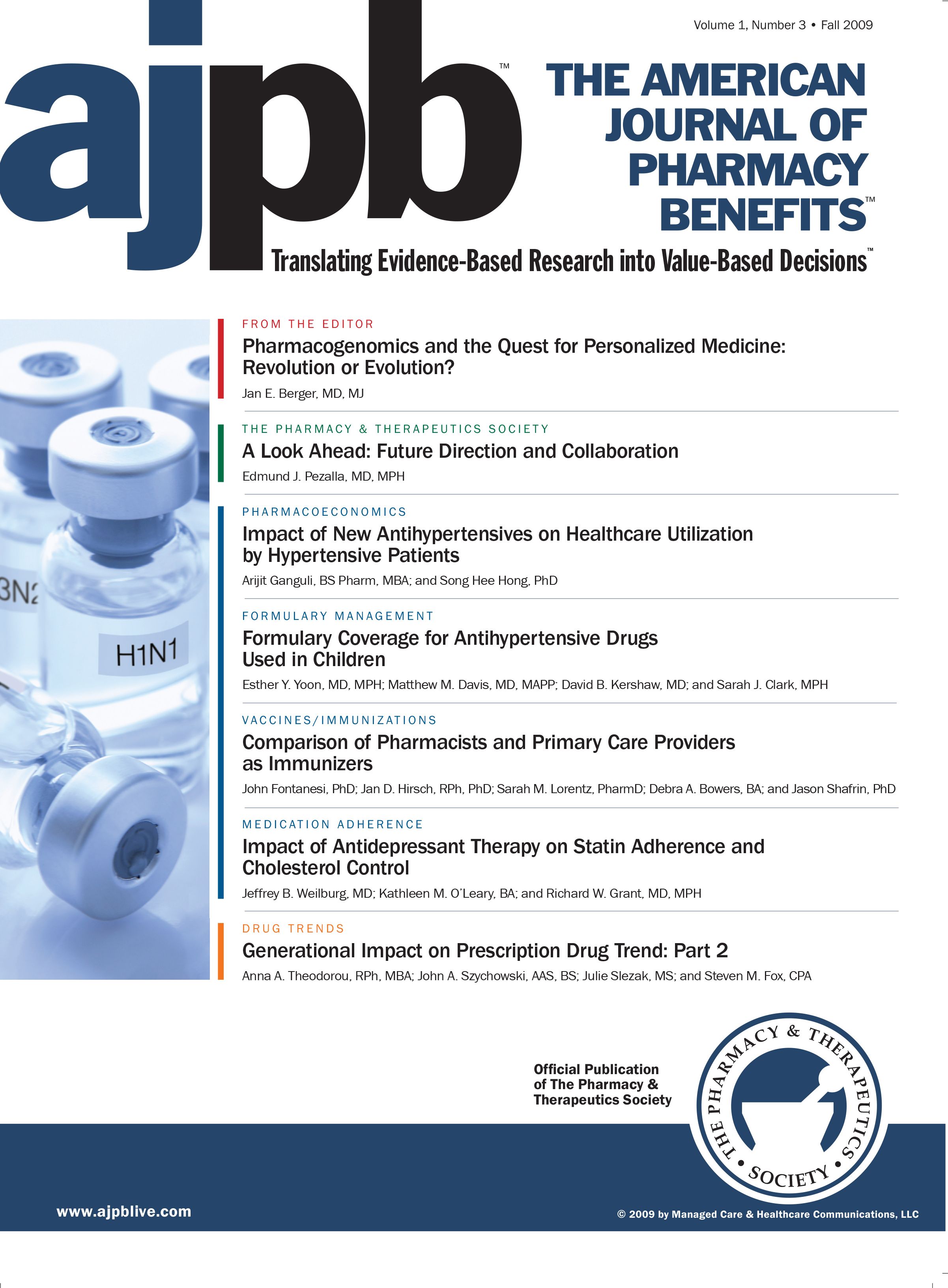Publication
Article
AJPB® Translating Evidence-Based Research Into Value-Based Decisions®
A Look Ahead: Future Direction and Collaboration
Author(s):
The Society seeks input from both individuals and organizations as it creates a new environment of data-driven P&T best practices.
First and foremost, I want to commend and congratulate the editors and staff of The American Journal of Pharmacy Benefits for their outstanding efforts to launch this new journal. The concept is strong and the content thus far has been timely and actionable. We at The Pharmacy & Therapeutics Society are pleased to call the Journal our official publication.
As we have begun to explore the ways in which the Journal and the Society can collaborate to fulfill our respective missions, we have discovered a great deal of consistency in what we would like to accomplish, as well as efficient and cost-effective ways of reaching our audience. We invite all readers to raise issues that need to be addressed to improve best practices in these important areas: formulary structure, operation and review of emerging research, and new developments in patient care.
One opportunity to address P&T best practices and share emerging trends is participation in the Society’s 9th Annual Conference, Coordinating Care and Technology, held November 5-6, 2009, at the Gaylord National Hotel in National Harbor, Maryland—on the Potomac River near Washington, DC. The opening general session will focus on the latest developments in comparative effectiveness research, both technically and from a policy perspective. That will be followed by a panel discussion on trends in healthcare information technology and its role in enhancing medical decisions. This topic is critical considering the challenges we face in identifying and measuring the metrics associated with evaluating the effectiveness of new and existing healthcare interventions.
Our panel on contemporary issues in the P&T process, traditionally one of the most timely and highly regarded sessions, will focus on topics such as risk evaluation mitigation strategy initiatives to evaluate safety and barriers, and solutions to P&T committee collaboration within and across healthcare systems. I cannot stress strongly enough the importance of all these sessions to help guide us in developing our own business and formulary review processes for the future.
The annual conference also will include workshops to review the pharmaceutical pipeline and therapeutic areas where new product development can be expected to challenge the conventional P&T committee review process.
These workshops include avoiding and managing medication errors, with a focus on trends in e-prescribing and incorporating metrics into new healthcare information technology systems; and trends in the use of evidence and guidelines in oncology, with case studies on the evolution of the formulary review process as we examine increasingly complex therapies for smaller populations and “orphan” conditions.
Our final general session will focus on the policy implications of the healthcare reform discussions that have been taking place during the course of this year. We will focus on what has been accomplished, what remains to be done to fulfill the stated objectives of the major participants in the policy development process, and the likely implications for all of us in 2010 and beyond. Additional information about the annual conference is available on our Web site at www.pandtsociety.org.
The Pharmacy & Therapeutics Society also has made a commitment to provide information, training, perspective, and education to physicians and others who serve on formulary committees across all practice settings. In this way, the Society can help these individuals work more effectively in an increasingly complex P&T committee environment. To this end, we will need volunteers to serve on task forces. These task forces will provide education on best practices regarding committee organization and structure, and the review process. In addition, they will address challenges faced by generalists, who may not be as familiar with the clinical trials and research subtleties of particular areas; and subspecialists, who may be too close to those trials and research to effectively advocate for them and would benefit from a broadened perspective.
We also seek support from companies who want to partner with the Society as we create a new environment of data-informed P&T best practices. For further information, please contact the Society directly at [email protected] or at 860-657-3207.

Newsletter
Stay informed on drug updates, treatment guidelines, and pharmacy practice trends—subscribe to Pharmacy Times for weekly clinical insights.






